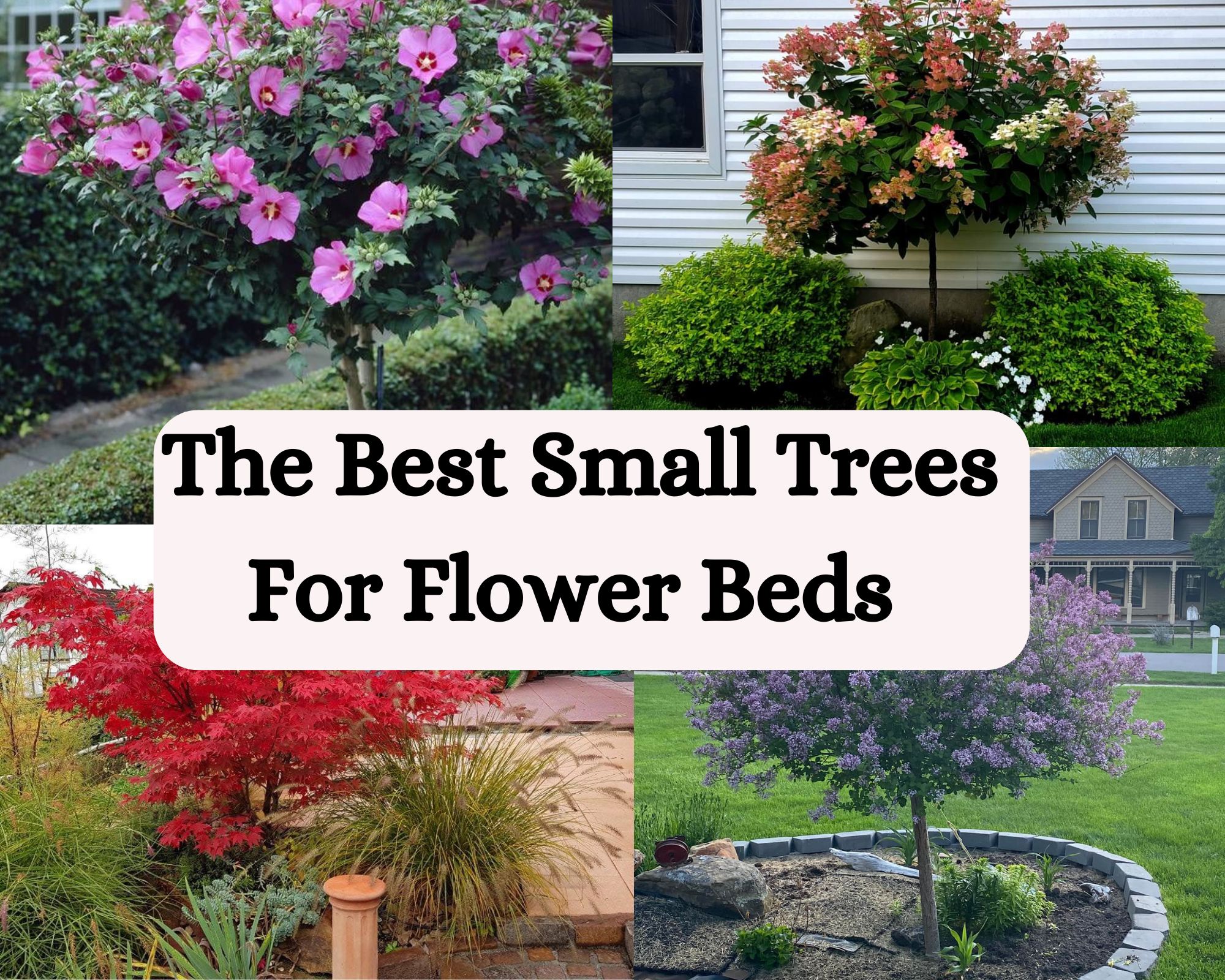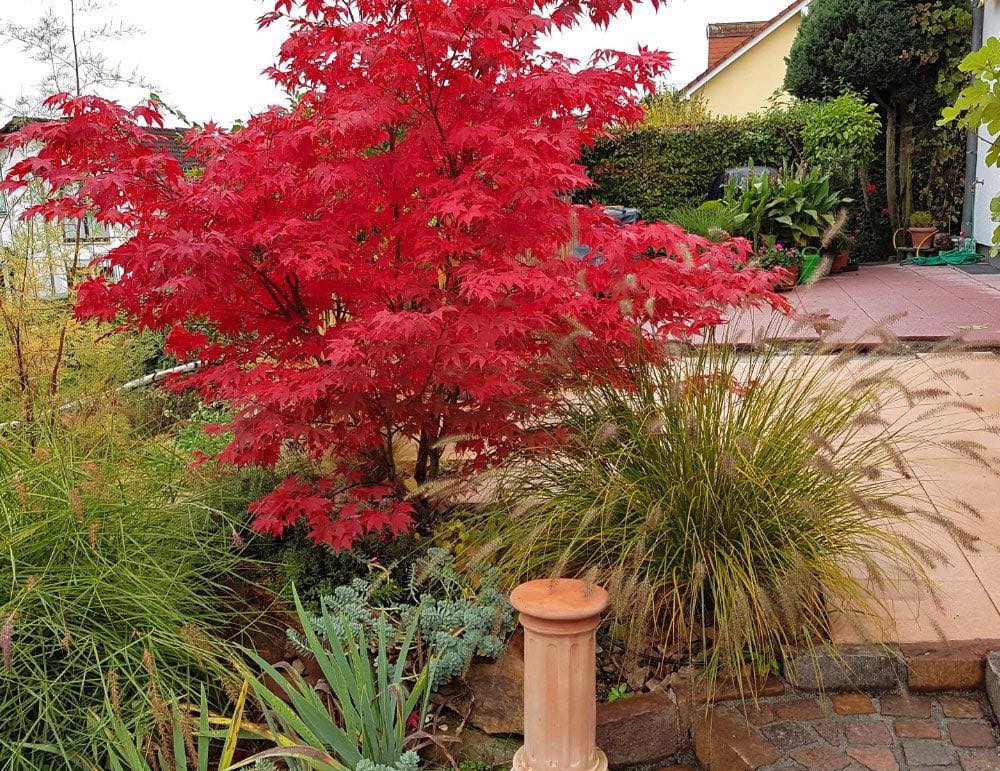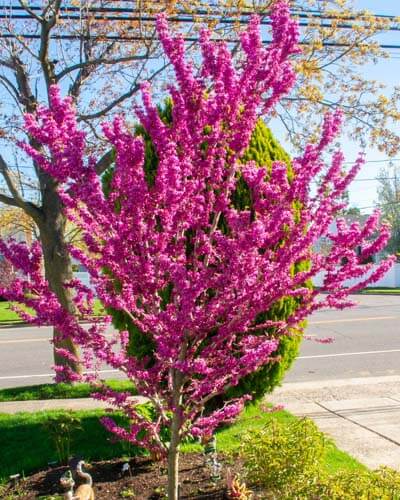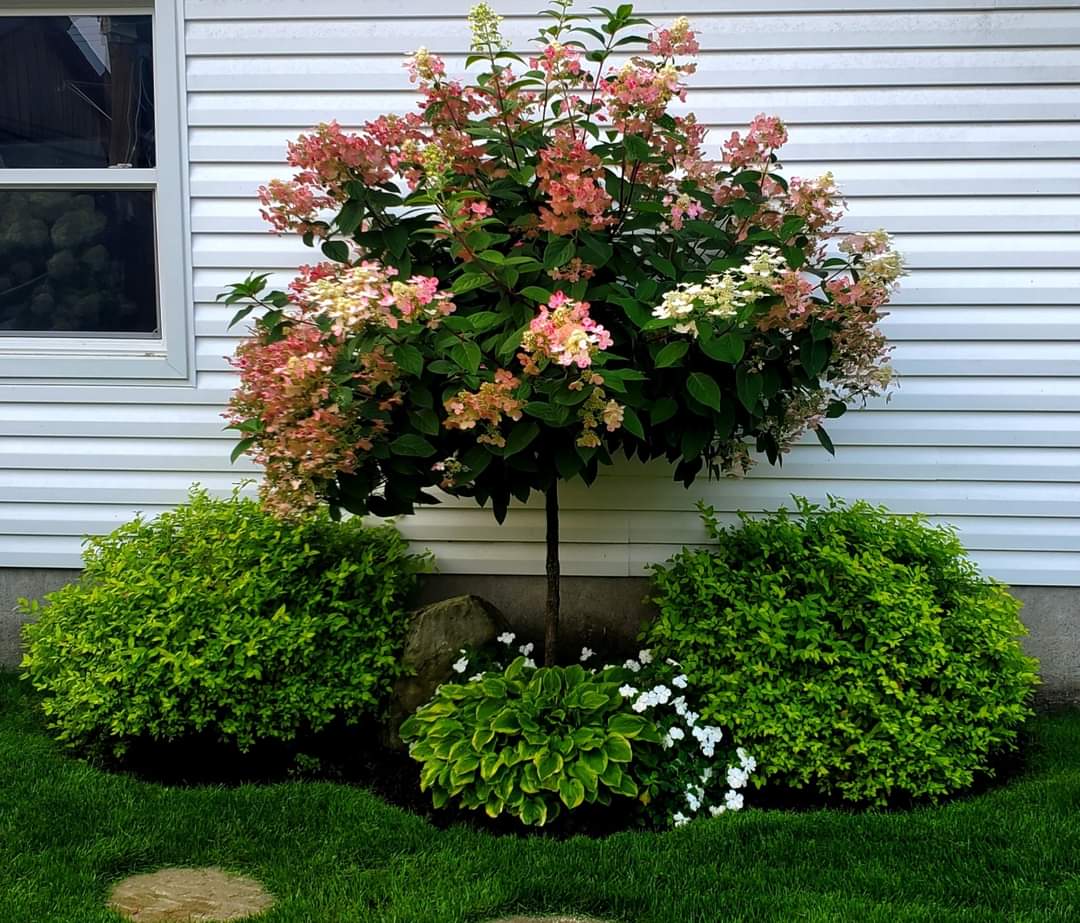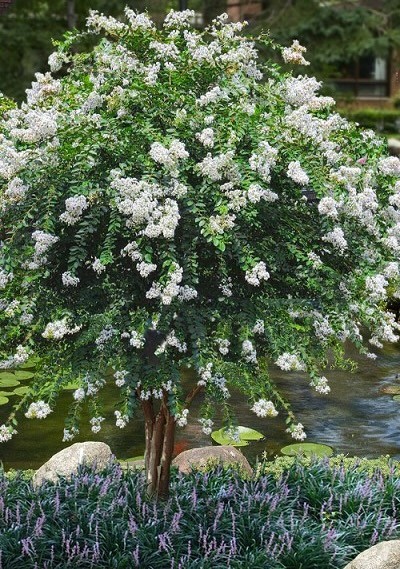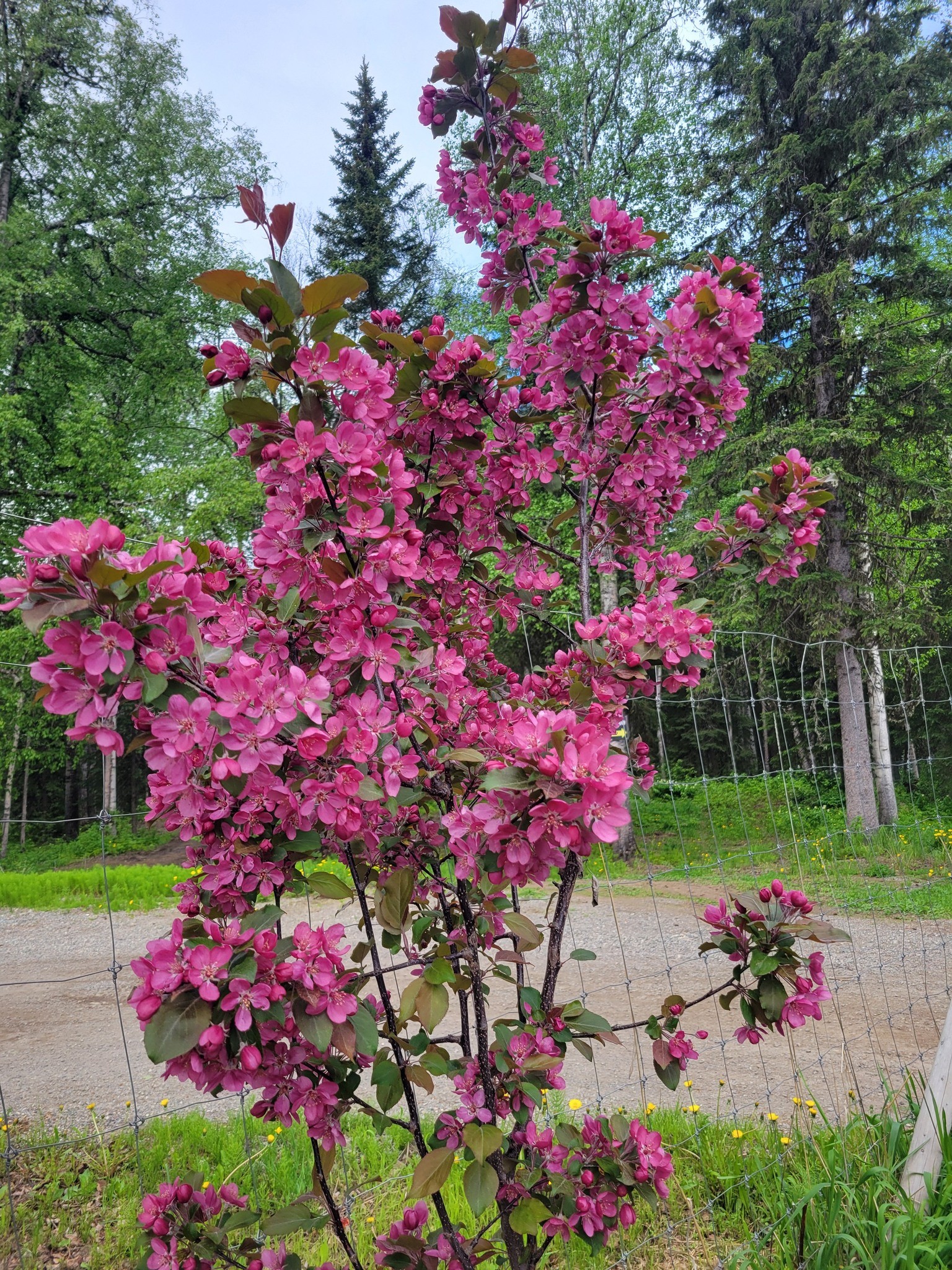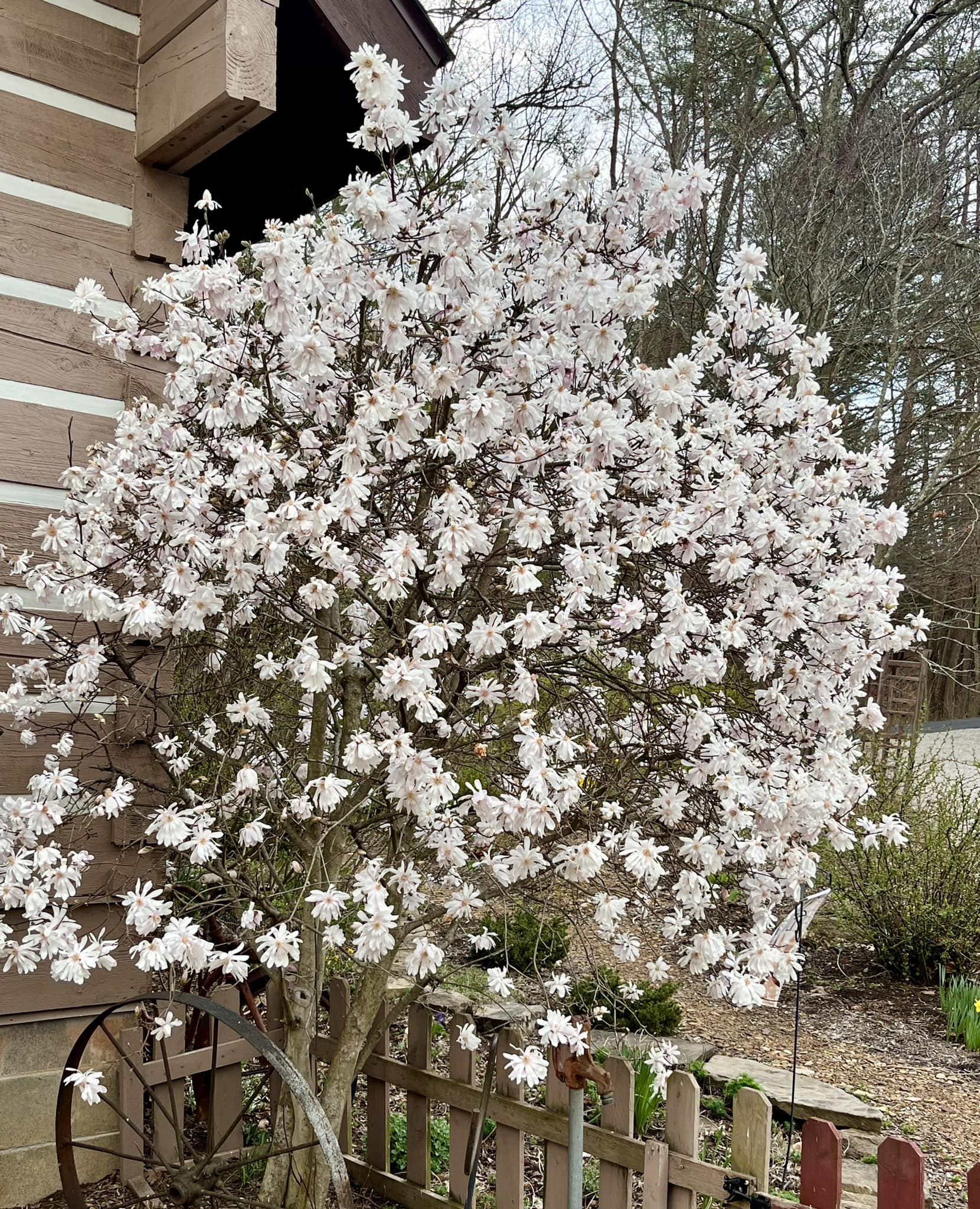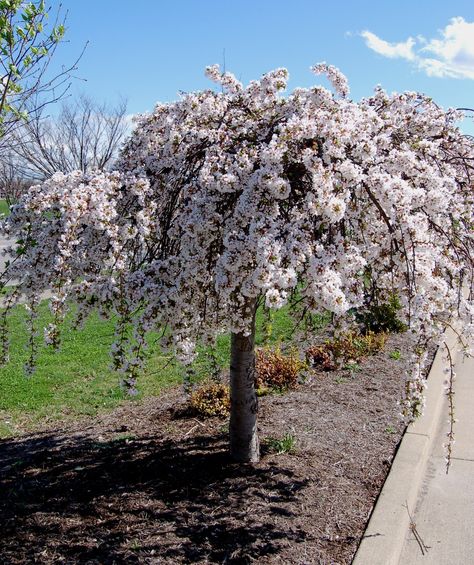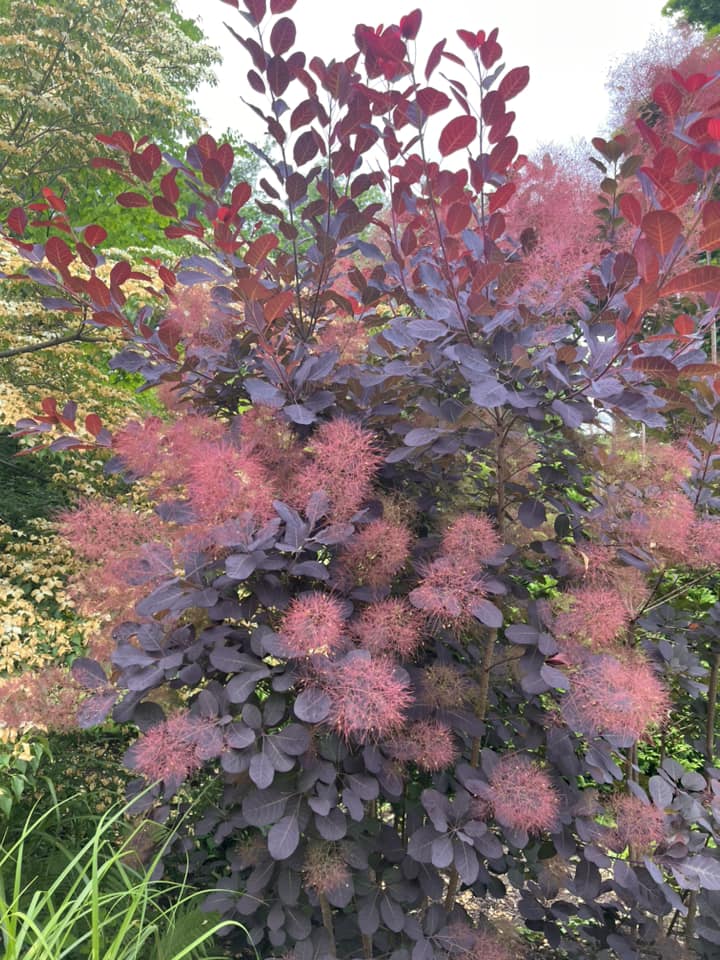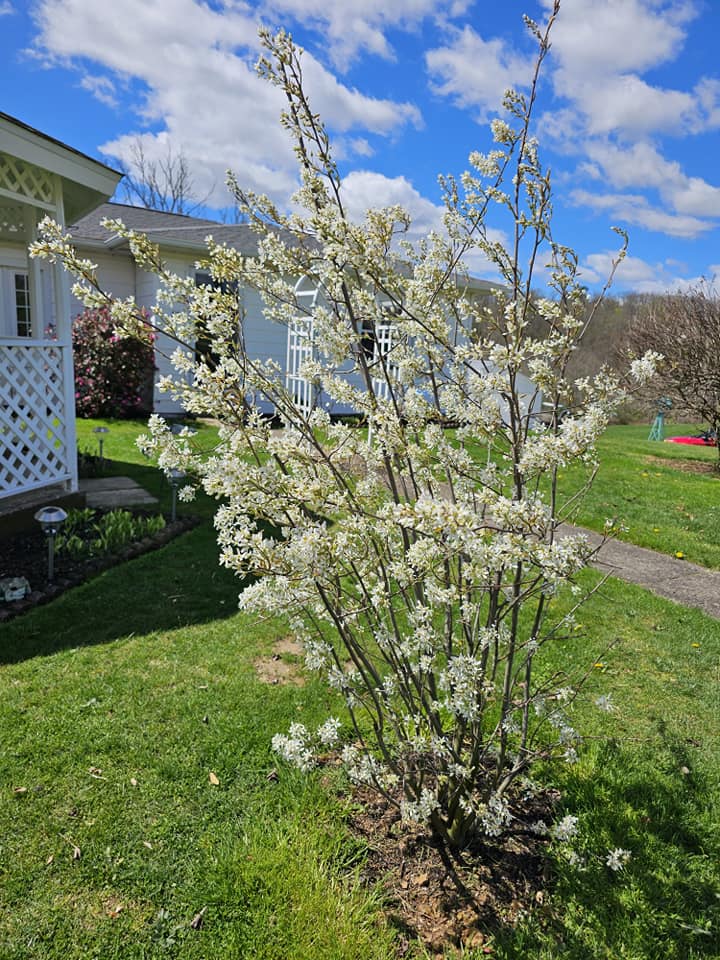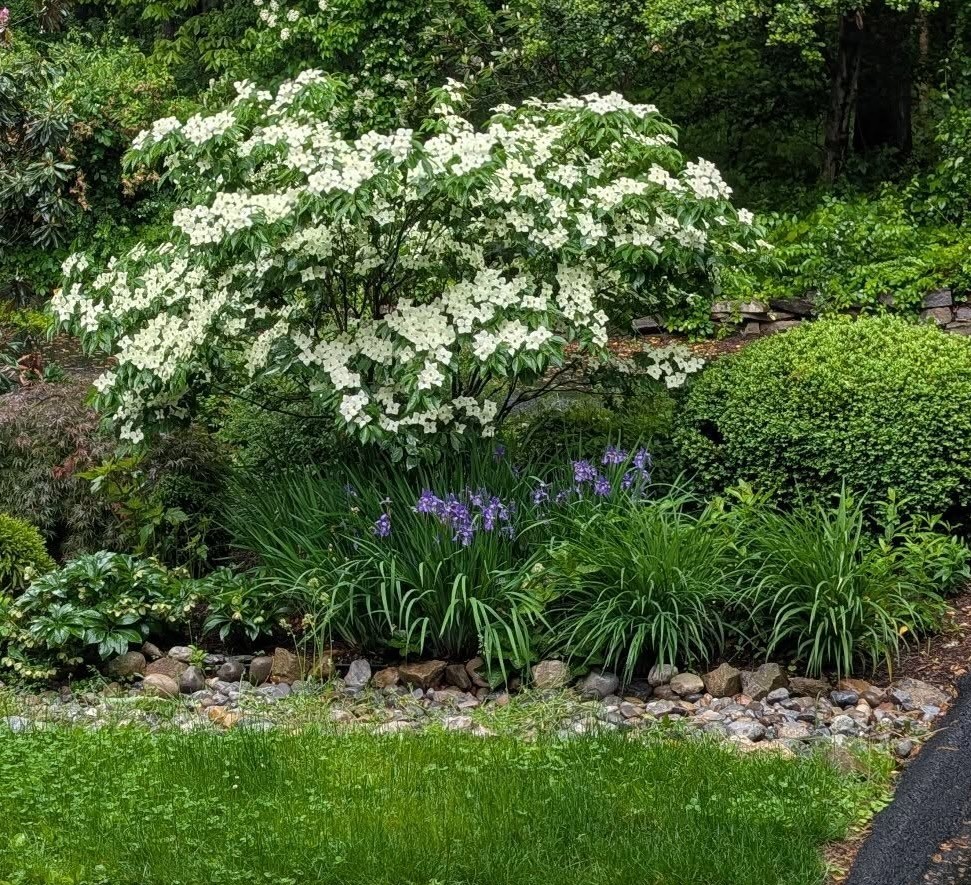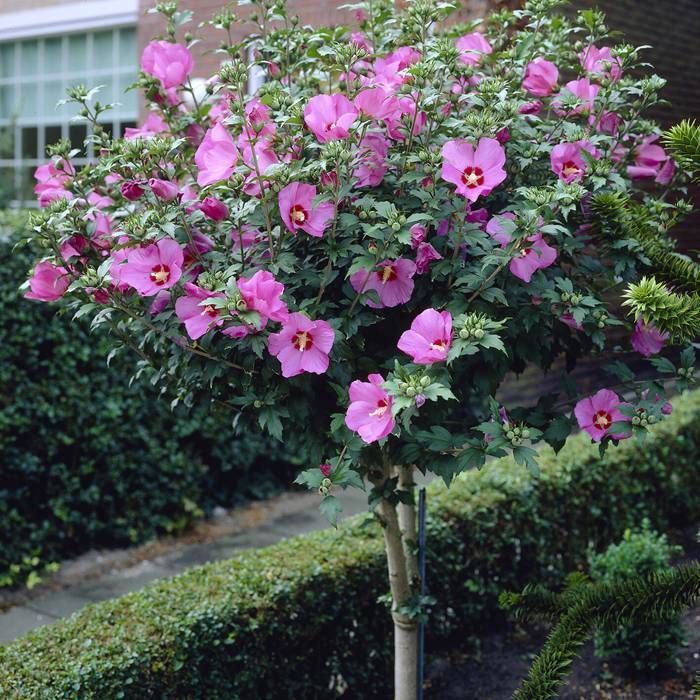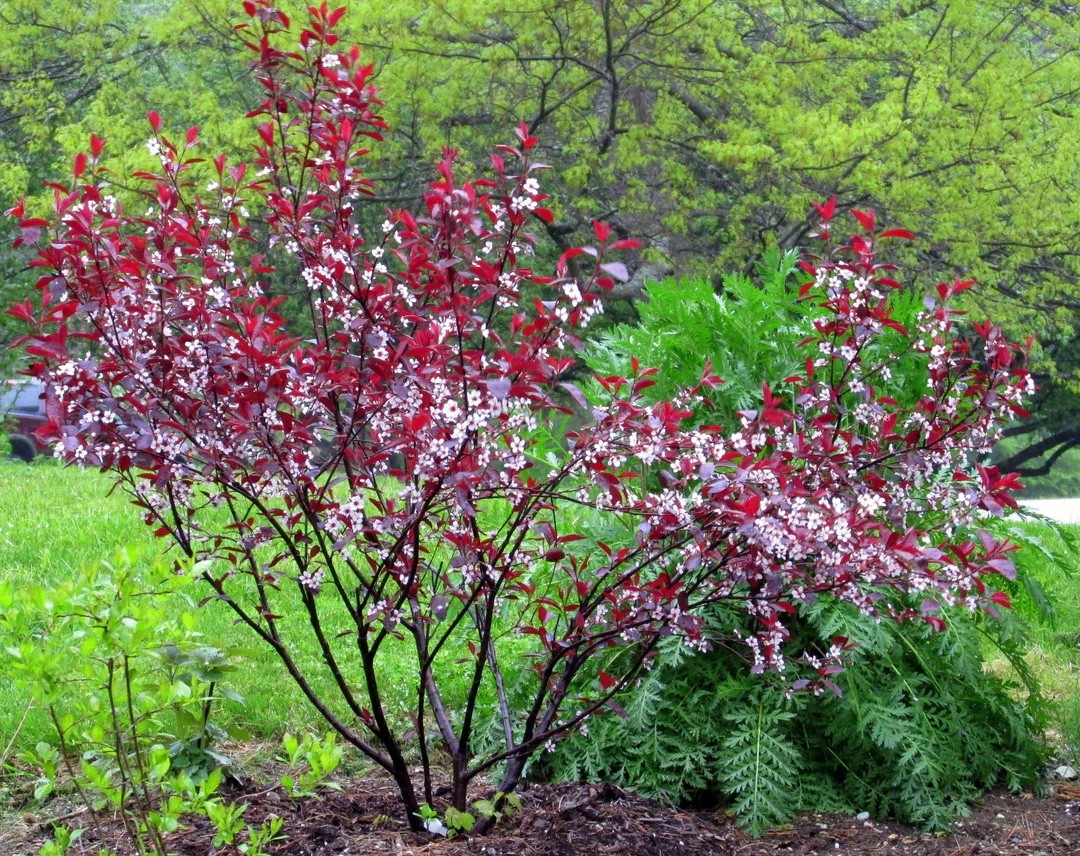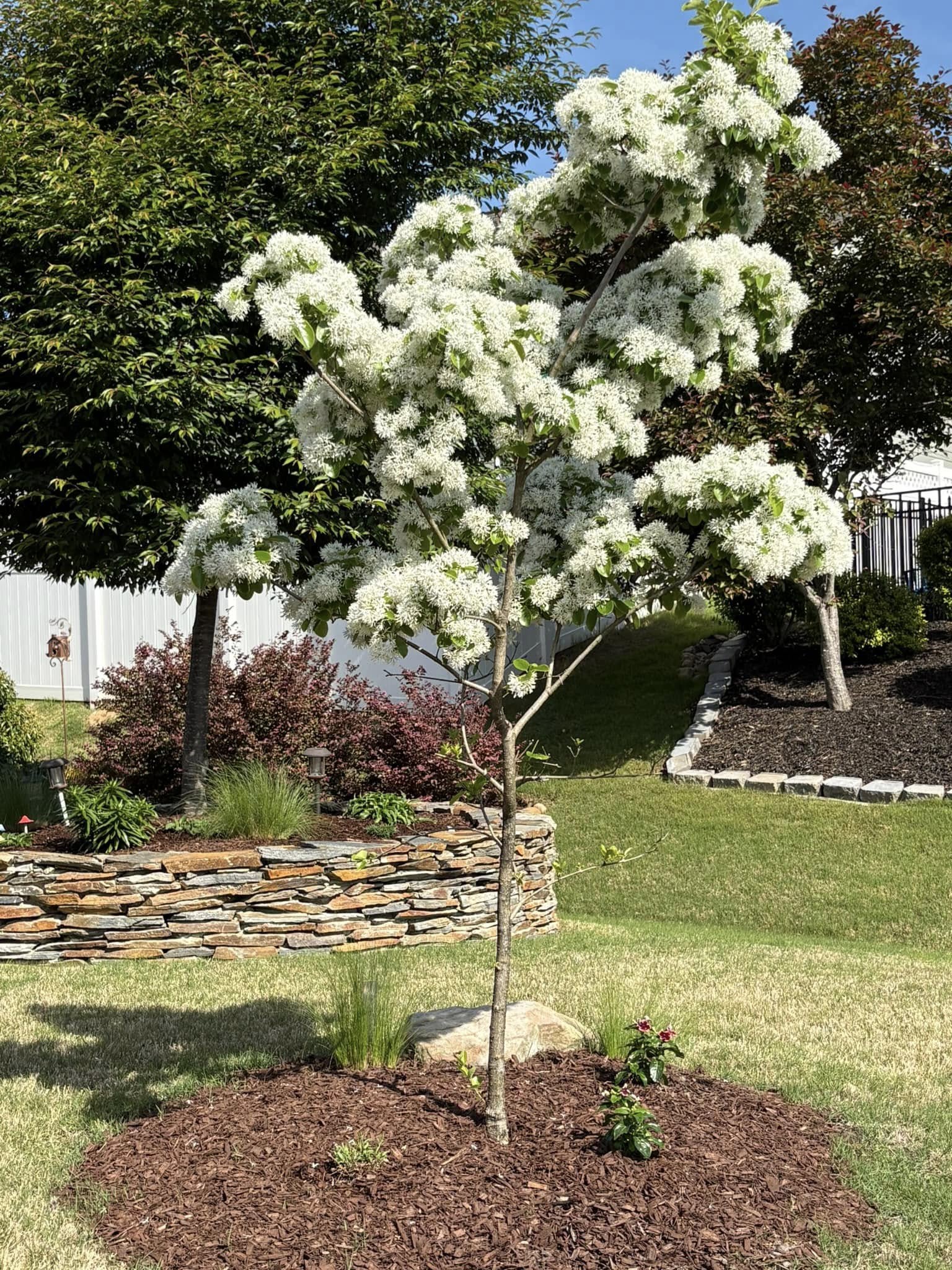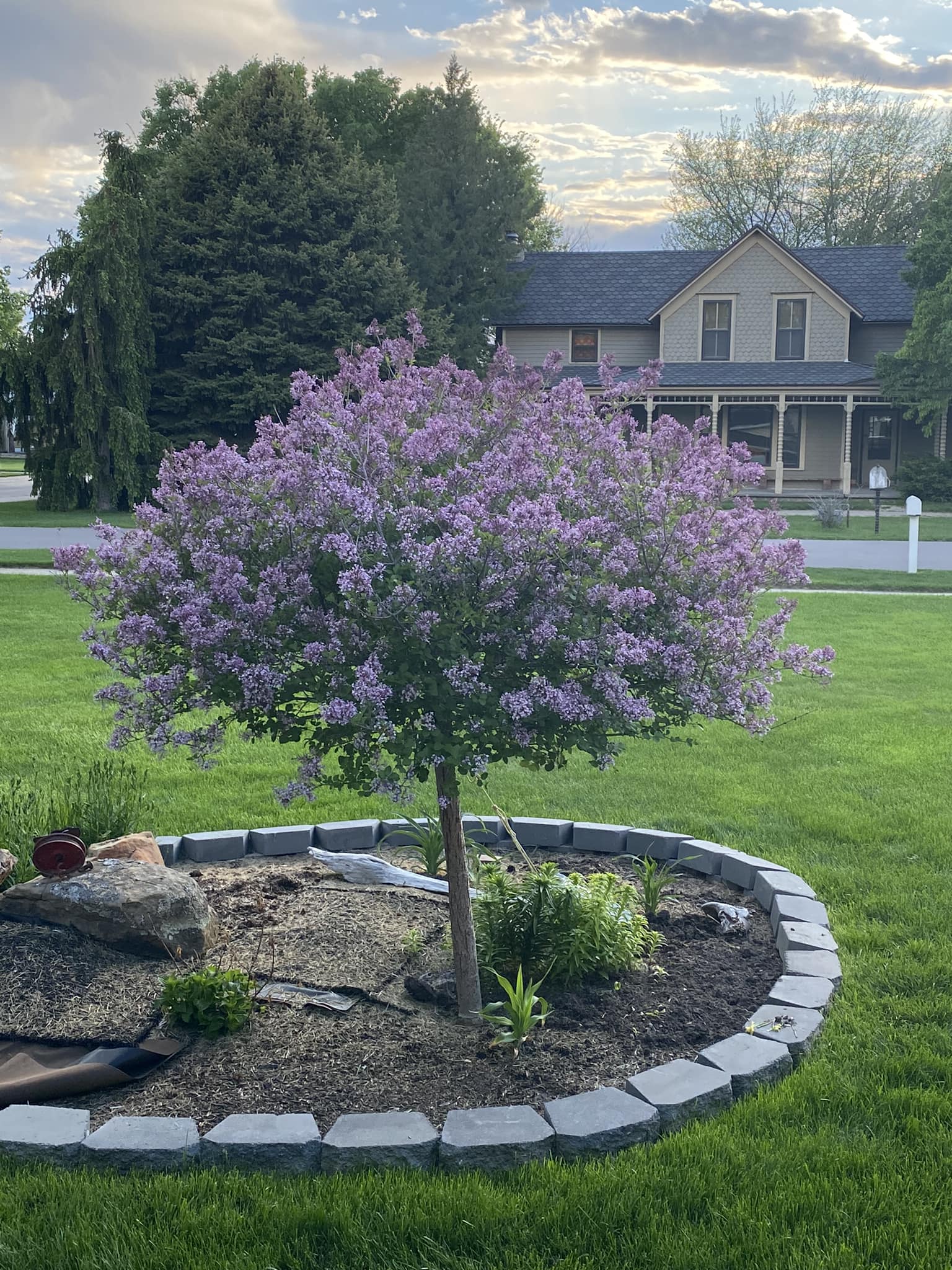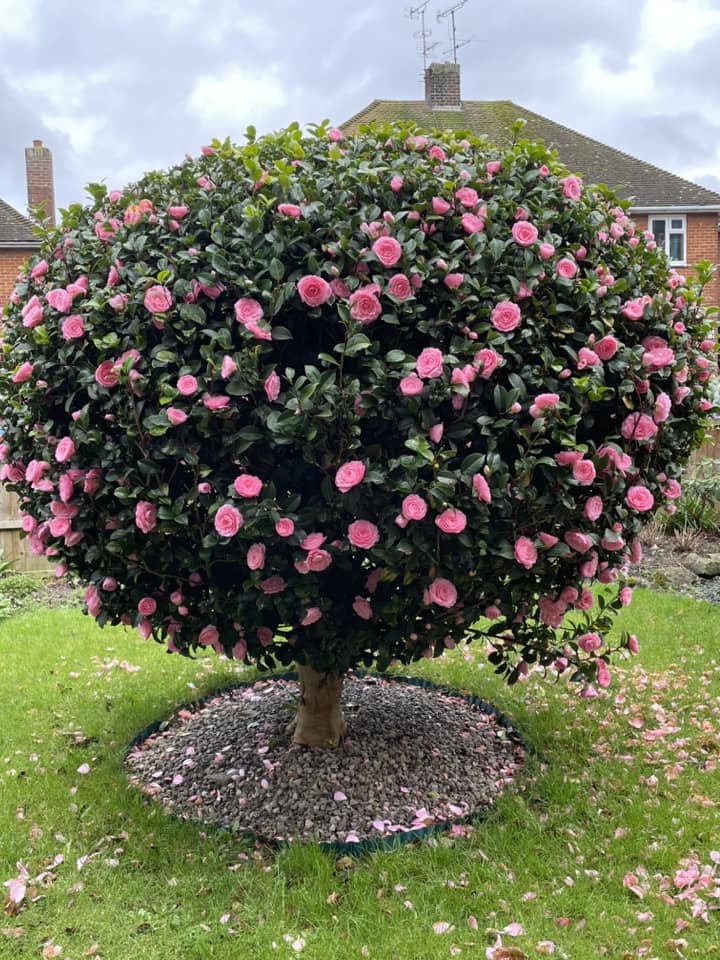As you plan what to grow in your flower beds, a question that could cross your mind is whether trees belong there. Yes, trees are a fundamental addition to flower beds that provide structure and height. However, as some trees grow enormous and overwhelm the space, you are better off choosing small trees.
With a plethora of small trees available, we’ve compiled a list of small trees suitable for flower beds. These trees will provide beauty, vertical interest, and shade without overwhelming your flower beds.
With that said, let’s kickstart our list.
16 Small Trees For Flower Beds
1. Japanese Maple
Let’s begin with a tree that effortlessly stands out, creating a beautiful focal point. Your flower beds will stand out even more, popping with stunning color if you add a Japanese Maple to them. Its lace-like, delicate leaves come in gorgeous colors, including brilliant reds, purples, and greens.
While some Japanese Maples grow well in full sun, most of them prefer partial shade. Consider ‘Crimson Queen,’ ‘Tamukeyama,’ ‘Bloodgood,’ and ‘Orangeola’ cultivars for your flower beds. This tree gives off a dappled shade that will benefit your underplantings.
Hardiness zone: 5-9
Related Posts:
- Small Trees With Non-Invasive Roots For Front Yard Or Backyard
- Best Tall Skinny Trees For Landscaping
2. Eastern Redbud
There are several small Eastern Redbud tree varieties perfect for flower beds. These include ‘Ace of Hearts,’ ‘Forest Pansy,’ ‘Rising Sun,’ and ‘Ruby Falls.’ This tree can handle full sunlight in cooler areas but generally flourishes in partial shade.
Eastern Redbud’s early Spring color display, featuring clusters of pink flowers and bare branches that emerge before the leaves, makes this tree a wonderful addition to a flower bed. Since the eastern redbud is an early bloomer, it will welcome pollinators to your home before most perennials awaken.
Hardiness zone: 4-9
3. Hydrangea Paniculata
The Hydrangea Paniculata is a stunning centerpiece for flower beds, offering structure, height, and seasonal color all in one compact form. Its large, conical blooms emerge creamy white and gradually shift to soft pink, creating an ever-changing display from midsummer through fall.
Ideal for small spaces, this dwarf tree adds vertical interest without overwhelming surrounding plants. It pairs beautifully with hostas, impatiens, and low-growing shrubs, making it perfect for layered flower bed designs. Easy to maintain and eye-catching, the Hydrangea Paniculata is an elegant choice for gardeners looking to elevate their flower bed composition.
Hardiness zone: 3-8
4. Crape Myrtle
Crape Myrtle trees, especially the dwarf varieties such as ‘Acoma,’ ‘Tonto,’ and ‘Chickasaw’ suit flower beds because of their small stature. This tree flowers abundantly in summer, making your flower beds colorful continuously for weeks.
The showy flowers come in shades of red, pink, white, and purple. The crape Myrtle also attracts butterflies and hummingbirds. This tree will suit you if you live in a hot climate or have a sunny garden because it thrives in sun and heat.
Crape Myrtles retain their beauty even after losing the leaves and flowers because they have smooth, exfoliating barks and sculptural branching.
Hardiness zone: 7-10
5. Saucer Magnolia
The cupsapen fragrant flowers of the saucer magnolia grow to an impressive diameter of 12 inches. These blooms appear on bare branches before the foliage emerges and before other plants blossom, creating a dramatic floral display of pink, white, or purple flowers.
Also, your flower beds will look attractive in winter due to Saucer Magnolia’s rounded crown and smooth bark. This tree enjoys full sunlight, but it can tolerate some shade.
Once your Saucer Magnolia flowering season ends, prune it to retain its shape and remove any damaged or diseased branches.
Hardiness zone: 4-9
6. Flowering Crabapple
This tree is a must-have in your flower beds if you seek color and fragrance in spring. The flowering crabapple produces many beautiful, often fragrant white, red, or pink flowers in spring before its lush leaves appear.
Besides making your flower beds smell and look lovely in spring, this tree looks stunning throughout the seasons. It dazzles with green, bronze, or purple glossy foliage in summer and small red, yellow, or orange fruits in fall that persist into winter.
Hardiness zone: 4-8
7. Star Magnolia
Light up your flower beds with this stunning tree that gets its name from its star-shaped white or pale pink flowers that emerge in late winter or early spring. This deciduous tree requires minimal care, like pruning out damaged, diseased, and weak branches.
Its green leaves turn orange, red, or yellow in fall, providing more seasonal interest. Besides the beautiful flowers and foliage, Star Magnolia has a rounded canopy and attractive bark. The Star Magnolia requires moderate watering and does well in rich soil and partial to full shade.
Hardiness zone: 4-9
8. Weeping Cherry
The Weeping Cherry is a breathtaking deciduous tree that will elevate the aesthetics of your flower beds. It has arching, graceful branches that get covered in soft pink or white blossoms every spring. It makes an excellent centerpiece for a medium to large flower bed.
An established Weeping Cherry tree is low-maintenance, requiring pruning occasionally to keep its elegant weeping form. This tree tolerates drought moderately and grows well in well-draining soil and full sun.
Watch out for scale insects, aphids, Japanese beetles, and cherry fruit flies if you plant this tree.
Hardiness zone: 5-8
9. Smoke Tree
While the Smoke Tree is technically a large shrub, it is usually pruned into a small tree. It stands out for its large, airy flower panicles that look like soft puffs of smoke and emerge in early summer. Smoke Tree foliage appears in dramatic, eye-catching colors such as burgundy, chartreuse, or deep green.
The Smoke Tree tolerates various growing conditions but prefers well-drained soil. However, it can handle rocky or poor conditions. For optimal flowering and the richest leaf color, expose this tree to full sun. Moreover, a mature smoke tree tolerates drought.
Hardiness zone: 4-9
10. Serviceberry
Bring delicate beauty, natural charm, and some sweet edible berries to your flower beds with this four-season small tree. The Serviceberry’s white spring flowers give way to sweet purple-blue berries that appear in summer. After this tree blooms, oval, green leaves emerge, which then turn fiery purple, red, or yellow in fall.
The Serviceberry has a smooth gray bark in winter. Birds, especially robins, cardinals, and cedar waxwings will visit your home to feed on the berries. You can also enjoy the berries fresh or use them to make desserts and jams.
The Serviceberry does best in full sun and prefers moist, slightly acidic, well-drained soil.
Hardiness zone: 4-9
11. Kousa Dogwood
This all-seasoned ornamental tree suits your flower bed if you want durability and beauty. The Kousa Dogwood can be the centerpiece or focal point of your flower bed, bringing its multi-season interest comprising spring flowers and fall foliage to winter bark.
Showy flowers cover this tree from spring to early summer before the green foliage appears. The leaves turn scarlet, orange, or burgundy in fall. Kousa Dogwoods are less vulnerable to diseases and are more tolerant to drought compared to other dogwood varieties.
Hardiness zone: 5-8
12. Hibiscus Syriacus
This small tree is quite decorative as it blooms big, bold, funnel-shaped flowers in purple, white, red, lilac, or pink. You can train the Hibiscus Syriacus into a small tree form to perfectly fit your flower beds.
This tree is a late bloomer, so it will make your yard visually appealing when other plants are already done flowering. The Hibiscus Syriacus typically grows up to 8 feet; you can also find smaller cultivars that reach 4-5 feet.
Hardiness zone: 5-9
13. Purple Leaf Sand Cherry
Growing to around 6.5 feet tall, the Purple Leaf Sand Cherry would make a beautiful addition to your flower beds. It dazzles especially throughout spring when its purple, red, or crimson leaves contrast with the stunning fragrant, pale pink or white flowers.
The Purple Leaf Sand Cherry typically grows as a shrub, but you can prune it into a single or multi-stemmed small tree. It doesn’t spread aggressively or have invasive roots.
Hardiness zone: 2-8
14. Fringe Tree
You can grow this versatile plant as a small tree or a big shrub. The Fringe Tree, native to North America, is known for its cloud-like, fragrant, fringe-like white flower clusters. Aside from its beautiful appearance, this tree suits flower beds because of its open canopy and moderate size.
If you want bigger and more magnificent blooms, grow male Fringe Trees because they tend to produce showier flowers compared to their female counterparts.
Hardiness zone: 3-9
15. Dwarf Korean Lilac
This tree will effortlessly fit your small flower bed because it grows to a height of 4–6 feet and spreads 5–7 feet. The Dwarf Korean Lilac blossoms abundantly, producing lavender-pink fragrant flowers that look splendid against the green leaves.
The Dwarf Korean Lilac takes on a compact, rounded, bushy form. If rabbits and deer are a nuisance in your area, this tree is an excellent choice. In addition, it can withstand cold temperatures, hence suitable for cooler climates.
Hardiness zone: 3-7
16. Japanese Camellia
Consider the Japanese Camellia for your flower bed if you seek a stunning long bloomer. Its gorgeous rose-like flowers will brighten your flower beds from winter to early spring. The plant will have your flower beds looking attractive when little else is blooming.
The Japanese Camellia stays moderately small, growing 6-12 feet tall and 6-10 feet spread. As an evergreen, this plant offers year-round color and structure.
Hardiness zone: 7-9
Final Remarks
Any of the trees listed above can make an excellent addition to your flower beds. So, choose the ones that suit your area’s growing conditions, available space, and aesthetic preference, and embark on a journey to enhance your flower beds’ design and visual appeal. During selection, consider the tree’s blooming time, especially if you desire a continuous floral display.

Hey there, I’m Derek Schew, a writer for Lawnholic.com, where we cover everything and anything related to lawns. As someone who’s spent countless hours tending to my own lawn, I’m passionate about sharing my knowledge and helping others achieve the perfect yard. From lawn care tips to product reviews, I’m committed to providing our readers with the most accurate and up-to-date information available. So whether you’re a seasoned lawn enthusiast or just getting started, I invite you to join our community and discover the joys of a lush, green lawn.

